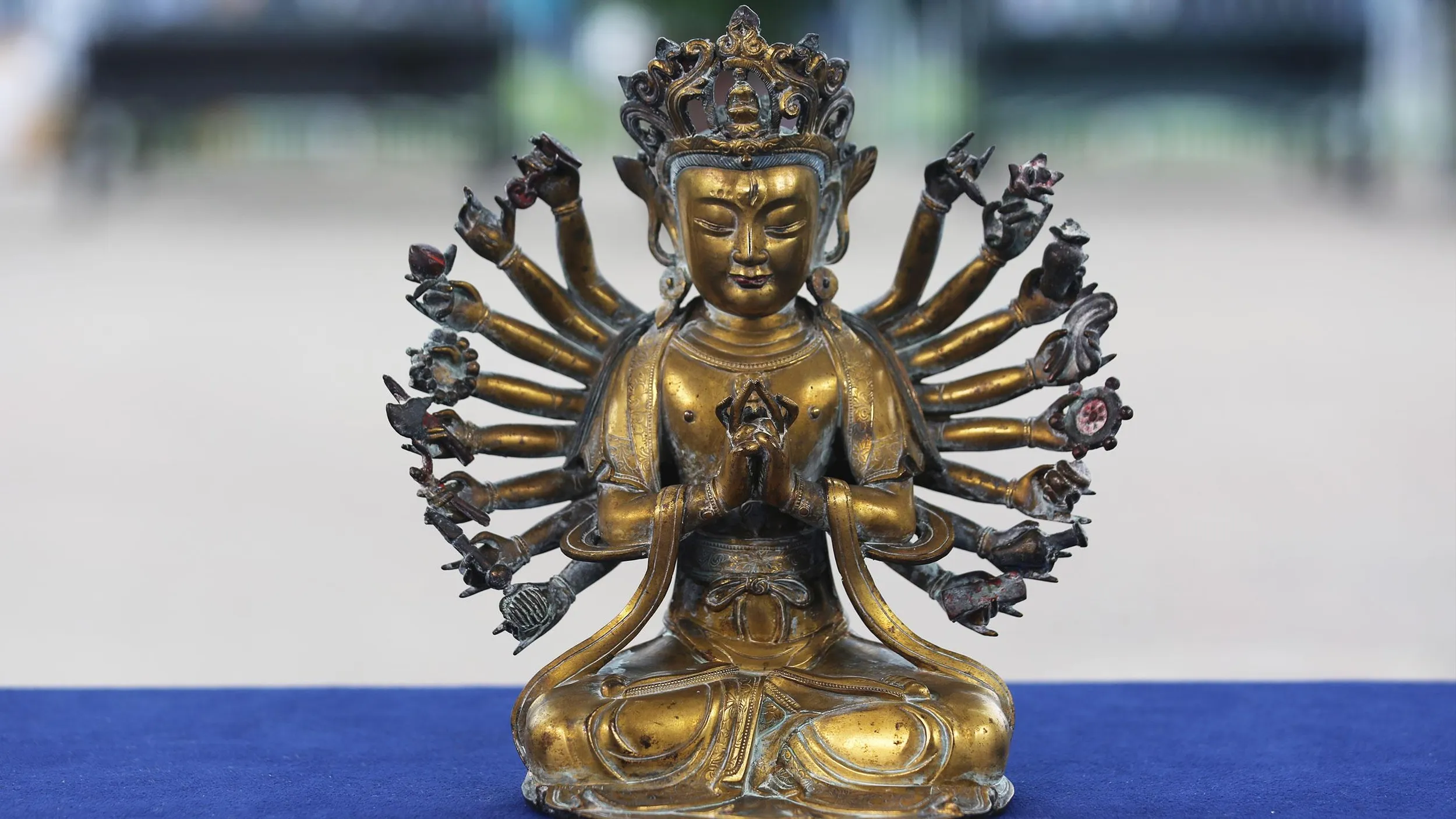GUEST: So my grandmother, who came here from Portugal, gave it to my mother, and my mother gave it to me before she passed about ten years or so ago.
APPRAISER: All right.
GUEST: So it's been in the family for at least 60, 70 years.
APPRAISER: Now, there's a name on there, "Fall River." Is that where your family was from?
GUEST: Fall River, yeah. We settled into Fall River back in the 1910 era.
APPRAISER: Well, there's a lot of history between Massachusetts and tea.
GUEST: (laughs) Oh, yeah, there is.
APPRAISER: And it kind of goes back to England, where this teapot comes from.
GUEST: Oh, okay.
APPRAISER: It's what we call bargeware, and bargeware is very distinctive. It typically has this rich, brown, chocolaty Rockingham glaze, we call it. And then it's punctuated with these very colorful applied, mostly flowers, and other things. And bargeware is very typically either dated or inscribed with the name of someone. It's called bargeware because it was popular with people who lived on and operated narrow boats, the barges that operated the canals. And much of it was made in the county of Leicestershire in England, near a little town called Measham. So it's sometimes called Meashamware. If you didn't know that Fall River was in Massachusetts, you might think it was somewhere in the British Isles. But here it tells us "North America." And I spoke to some of my colleagues-- none of us had ever seen a piece of bargeware with a North American reference before. If it wasn't of North American interest, it might be worth $150 or $200.
GUEST: Mm-hmm.
APPRAISER: But it isn't. It's got that twist to it. So, again, we thought about it. And I'm going to give you a value that I think is fair for replacement or insurance.
GUEST: Okay.
APPRAISER: That's $2,000.
GUEST: Wow.
APPRAISER: Great thing.
GUEST: Wow. Well, that's great news. Thank you very much for that insight on it.



